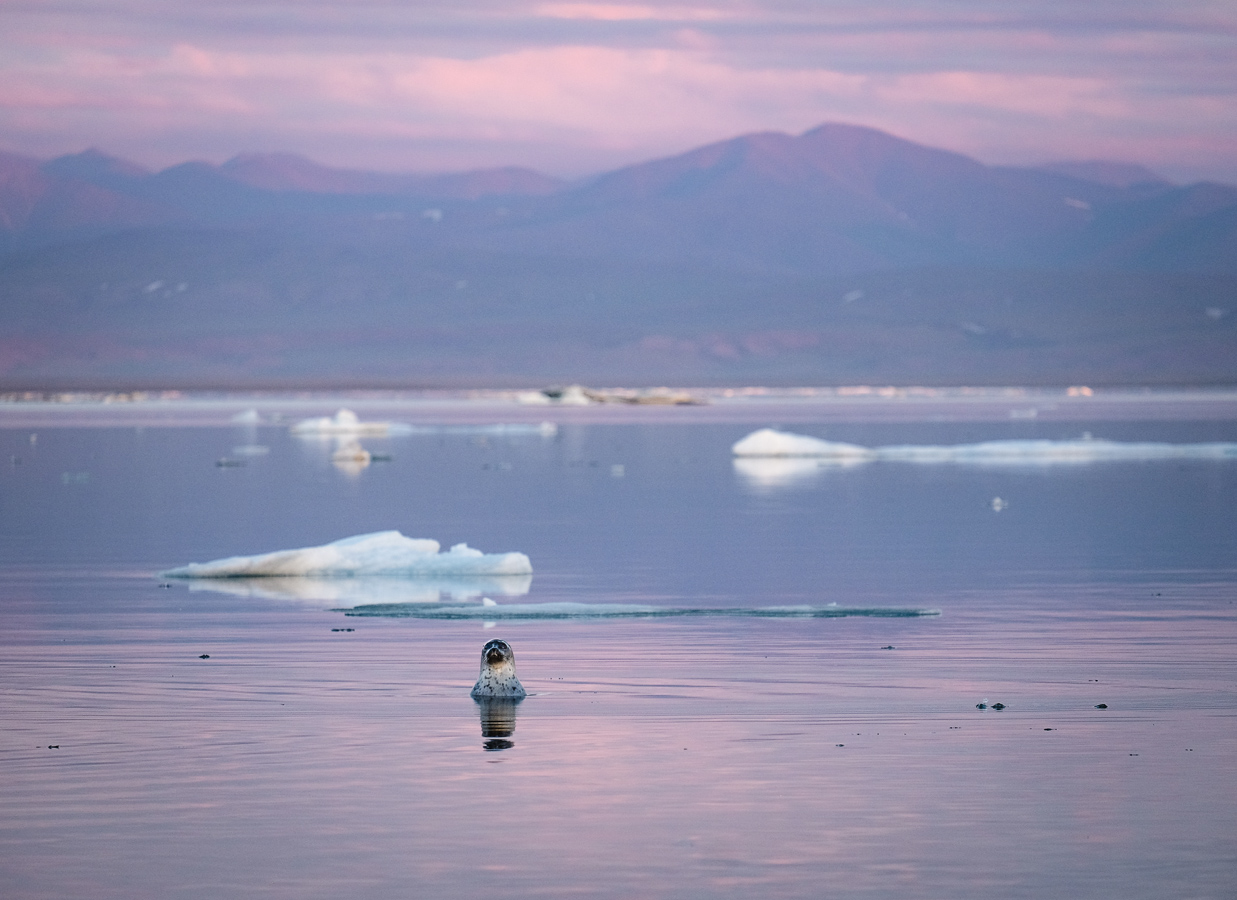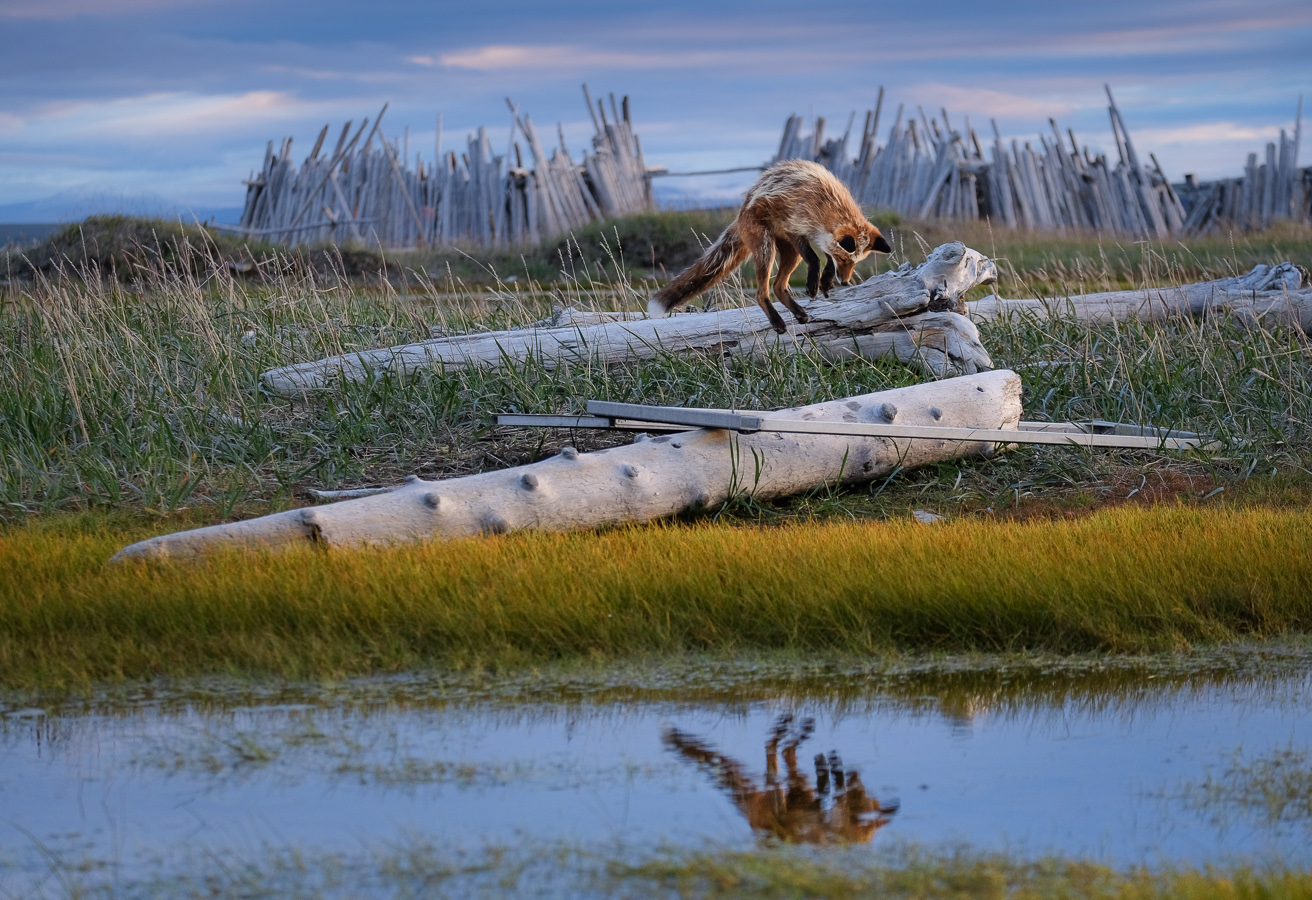
A ringed seal coming to the surface to breathe - and to take a look at the strange photographer on the shore. The rich waters around Qikiqtaruk make it an ideal habitat for marine mammals such as seals and whales.

Foxes have excellent senses and can detect lemmings and voles scurrying in the grass. They can predict the trajectory of their prey and jump to attack from above, a behaviour called “mousing”.

An eider duck amidst drifting sea ice on the calm Beaufort Sea. Eiders are northern sea ducks living in colonies. Their very warm down keep their eggs toasty in cold Arctic conditions.

A snowy owl takes flight after resting on the tundra. There are no trees on the island, so owls like to perch on elevated mounds of earth or on a hillside to survey their surroundings. They nest on the ground and feed primarily on lemmings, although they can also hunt larger mammals and birds.

Muskoxen have a strong social structure and usually live in herds of one or two dozen animals. Unlike their name suggests, they are more closely related to sheep than to cattle.

Only around three kilometers separate the mainland from the nearest part of the island, and this distance is made even smaller by long spits of sand advancing into the sea. This makes the crossing easy for good swimmers like bears or caribou.

A ringed seal swims lazily in the shallow waters of a sheltered cove close to camp. The smallest of Arctic seals, ringed seals are widespread in the northern polar region and live on and around the ice. They feed on fish and marine invertebrates, and are a key prey to polar bears.

The ptarmigan is found at high latitudes and in some mountain regions of the Northern Hemisphere, and is well adapted to life in the seasonally contrasting tundra. Its plumage, a mottled brown in summer, turns to pure white in winter, making the bird a master of camouflage. It feeds mainly on the buds of shrubs such as willows and birches.

Red foxes have a large geographic range and can be found all the way up to the Arctic Circle. With climate change creating more suitable conditions for red foxes at higher latitudes, the species may increasingly become a threat to the smaller and less competitive Arctic fox.

A semipalmated plover chick makes hesitant steps in the sun-drenched, marshy grass near camp. Semiplamated plovers are ground-nesting shorebirds. Parents will distract potential predators away from the nest by faking a broken wing while running in the opposite direction.

Survivors of the Pleistocene era, muskoxen now face rapid environmental change, as evidenced by the pockmarked hill in the background, where thawing permafrost has led to massive ground collapses.

Snow buntings are passerine birds well adapted to life in the Arctic, where they breed and spend the summer. However, they migrate to more temperate latitudes to overwinter. Males are easily recognisable due to their bright black and white plumage.